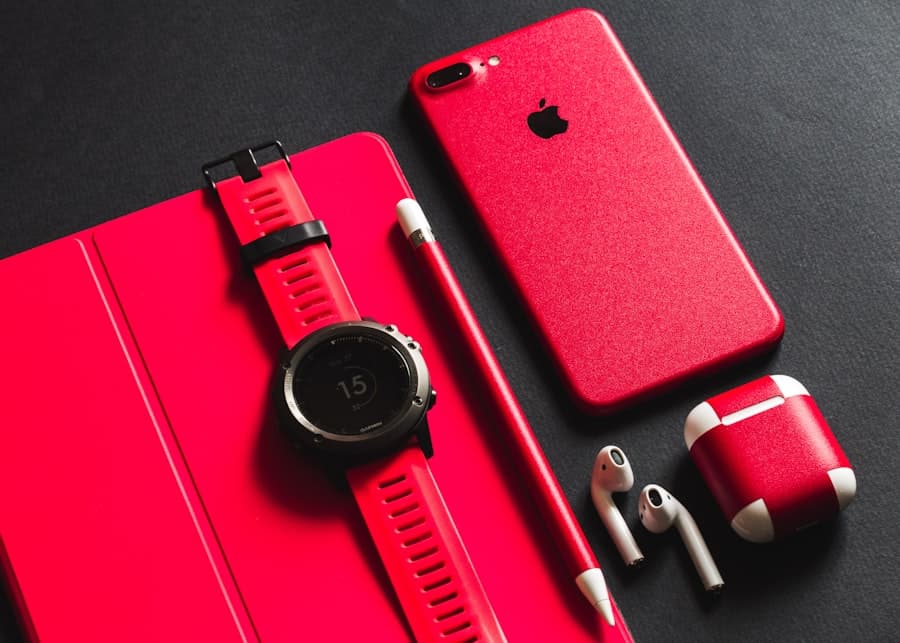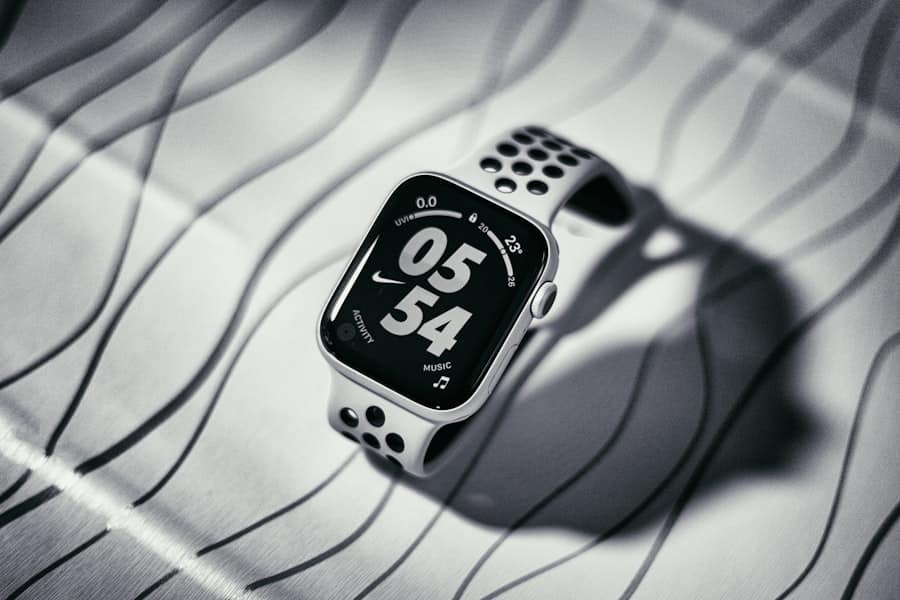The advent of wearable technology has revolutionized the way individuals monitor and manage their health. These devices, which range from smartwatches to fitness trackers, have become ubiquitous in modern society, offering users a wealth of information about their physical well-being. By seamlessly integrating technology into daily life, wearables empower users to take charge of their health in ways that were previously unimaginable.
The data collected by these devices can provide insights into various aspects of health, including physical activity, sleep patterns, heart rate, and even stress levels. As a result, wearables have transitioned from mere fitness gadgets to essential tools for health management. The significance of wearables extends beyond personal use; they are increasingly being recognized as valuable assets in the broader healthcare landscape.
With the ability to collect real-time data, these devices can facilitate more informed decision-making for both users and healthcare providers. The insights derived from wearable technology can lead to improved health outcomes, as individuals become more aware of their habits and conditions. This shift towards data-driven health management is not just a trend; it represents a fundamental change in how we approach wellness and disease prevention.
Key Takeaways
- Wearable devices continuously track and analyze daily health data to provide real-time insights.
- Advanced algorithms interpret collected data to offer personalized health recommendations.
- Integration of wearable data with healthcare providers enhances personalized medical care.
- Privacy and security of health data remain critical concerns in wearable technology use.
- Future trends point toward more sophisticated, AI-driven wearables for deeper health insights.
The Role of Wearables in Tracking Daily Health Data
Wearable devices serve as constant companions, diligently tracking a myriad of health metrics throughout the day. One of the primary functions of these devices is to monitor physical activity levels. For instance, fitness trackers often count steps taken, calories burned, and active minutes, providing users with a comprehensive overview of their daily movement.
By setting goals and receiving real-time feedback, users can make informed choices about their physical activity. In addition to tracking movement, wearables also monitor vital signs such as heart rate and sleep quality.
Many smartwatches are equipped with heart rate sensors that provide continuous monitoring, allowing users to observe fluctuations in their heart rate throughout the day. This information can be crucial for individuals with specific health conditions or those engaged in high-intensity workouts. Furthermore, sleep tracking features enable users to analyze their sleep patterns, offering insights into the duration and quality of their rest.
By understanding these metrics, individuals can make adjustments to their routines that promote better overall health.
How Wearables Analyze and Interpret Health Data

The true power of wearable technology lies not just in data collection but in its ability to analyze and interpret that data effectively. Wearable devices utilize sophisticated algorithms and machine learning techniques to process the vast amounts of information they gather. For example, a fitness tracker may analyze a user’s activity data over time to identify trends and patterns.
This analysis can reveal insights such as whether a user is more active on certain days of the week or how their activity levels correlate with their sleep quality. Moreover, wearables often incorporate advanced features such as heart rate variability (HRV) analysis, which provides deeper insights into an individual’s stress levels and overall cardiovascular health. By examining the variations in time intervals between heartbeats, wearables can offer users a glimpse into their autonomic nervous system’s functioning.
Personalized Recommendations and Insights from Wearable Devices
One of the most compelling aspects of wearable technology is its ability to provide personalized recommendations based on individual health data. By leveraging machine learning algorithms, wearables can analyze a user’s historical data and offer tailored suggestions for improving health outcomes. For instance, if a user consistently falls short of their step goal, the device may recommend specific strategies to increase daily activity, such as taking short walks during breaks or incorporating more movement into daily routines.
Additionally, wearables can provide insights related to nutrition and hydration based on activity levels and personal goals. Some devices allow users to log their food intake and water consumption, enabling the wearable to offer feedback on dietary habits. For example, if a user is not meeting their hydration goals during a particularly active day, the device may send reminders to drink water.
This level of personalization fosters a proactive approach to health management, encouraging users to make informed choices that align with their individual needs.
Impact of Wearables on Daily Health Habits
The integration of wearable technology into daily life has led to significant changes in health habits for many individuals. The constant feedback provided by these devices serves as a powerful motivator for users to adopt healthier behaviors. For example, individuals who wear fitness trackers often report increased physical activity levels due to the awareness created by step counts and activity goals.
This phenomenon is known as the “Hawthorne effect,” where individuals modify their behavior in response to being observed. Moreover, wearables have been shown to enhance accountability among users. Many devices allow for social sharing features, enabling users to connect with friends or family members and share their progress.
This social aspect can create a sense of community and support, further encouraging individuals to stay committed to their health goals. As users engage with their wearables and track their progress over time, they often develop a greater sense of ownership over their health journey.
Integrating Wearable Data with Healthcare Providers

The potential for wearable technology extends beyond individual use; it also holds promise for enhancing communication between patients and healthcare providers. As more individuals adopt wearables, there is an increasing interest in integrating this data into clinical practice. Healthcare providers can leverage the continuous stream of health data collected by wearables to gain insights into patients’ conditions outside of traditional office visits.
For instance, patients with chronic conditions such as diabetes or hypertension can benefit from real-time monitoring through wearables. By sharing data with healthcare providers, patients can receive timely interventions based on their current health status. This integration fosters a more collaborative approach to healthcare, where patients are active participants in managing their conditions rather than passive recipients of care.
Privacy and Security Considerations for Wearable Health Data
As wearable technology continues to proliferate, concerns regarding privacy and security have emerged as critical issues. The sensitive nature of health data collected by wearables necessitates robust measures to protect user information from unauthorized access or breaches. Many wearable manufacturers have implemented encryption protocols and secure data storage practices; however, users must remain vigilant about how their data is shared and used.
Additionally, regulatory frameworks surrounding wearable health data are still evolving. In many regions, laws such as the Health Insurance Portability and Accountability Act (HIPAA) in the United States govern how healthcare providers handle patient information but may not extend fully to wearable manufacturers. Users should be aware of the privacy policies associated with their devices and consider opting out of data sharing features that may compromise their privacy.
Future Trends in Wearables and Personalized Health Insights
Looking ahead, the future of wearable technology promises exciting advancements that will further enhance personalized health insights. One emerging trend is the integration of artificial intelligence (AI) into wearable devices. AI algorithms can analyze complex datasets more efficiently than traditional methods, allowing for more accurate predictions about health trends and potential issues.
For example, AI could help identify early warning signs of conditions such as atrial fibrillation by analyzing heart rate patterns over time. Another promising development is the expansion of wearables beyond fitness tracking into areas such as mental health monitoring. Devices equipped with sensors that measure physiological responses related to stress or anxiety could provide valuable insights into mental well-being.
As awareness grows around the importance of mental health, wearables may play a crucial role in helping individuals manage stress and emotional challenges. In conclusion, wearable technology has transformed the landscape of personal health management by providing real-time insights and fostering proactive behaviors among users. As these devices continue to evolve and integrate with healthcare systems, they hold the potential to reshape our understanding of health and wellness in profound ways.
Wearable technology has revolutionized the way we monitor our health, providing personalized insights that can significantly enhance our daily routines. For those interested in exploring the broader trends shaping the future of health technology, a related article discusses the anticipated trends for 2023, highlighting innovations that could further influence how wearables integrate into our lives. You can read more about these trends in the article [What Trends Are Predicted for 2023](https://enicomp.com/what-trends-are-predicted-for-2023/).
FAQs
What are wearable devices in the context of health monitoring?
Wearable devices are electronic gadgets worn on the body, such as smartwatches, fitness trackers, and biosensors, that collect data related to an individual’s health and physical activity.
How do wearables collect health data?
Wearables use sensors to monitor various physiological parameters like heart rate, sleep patterns, physical activity, blood oxygen levels, and sometimes even stress indicators, continuously gathering data throughout the day.
What types of personalized health insights can wearables provide?
Wearables can offer insights such as daily activity levels, sleep quality, heart rate variability, calorie expenditure, hydration reminders, and stress management tips tailored to the user’s unique data.
How do wearables create personalized daily health insights?
Wearables analyze the collected data using algorithms and machine learning to identify patterns and trends specific to the user, enabling customized feedback and recommendations for improving health and wellness.
Can wearables help in managing chronic health conditions?
Yes, wearables can assist in monitoring symptoms and vital signs related to chronic conditions like diabetes, hypertension, and heart disease, providing users and healthcare providers with valuable real-time information.
Are the health insights from wearables accurate?
While wearables provide useful estimates and trends, their accuracy can vary depending on the device and sensor quality. They are best used as supplementary tools rather than definitive medical devices.
How do wearables ensure user privacy and data security?
Most wearable manufacturers implement encryption, secure data storage, and user consent protocols to protect personal health information, though users should review privacy policies and settings carefully.
Do wearables require internet connectivity to function?
Wearables can collect data offline, but internet connectivity is often needed to sync data with apps or cloud services for detailed analysis and personalized insights.
Can wearables motivate users to improve their health?
Yes, by providing real-time feedback, goal tracking, and personalized recommendations, wearables can encourage users to adopt healthier habits and stay engaged with their wellness routines.
Are wearable health insights suitable for all age groups?
Wearables can be beneficial for various age groups, but the type of device and the nature of insights may vary depending on the user’s age, health status, and specific needs.

